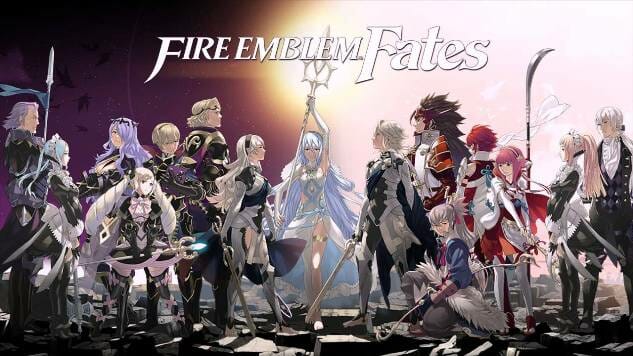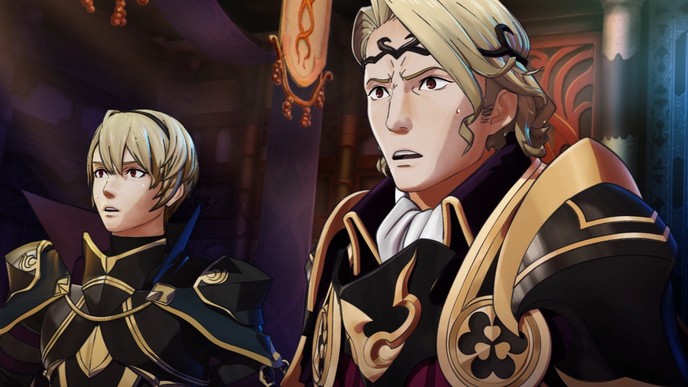Fire Emblem Fates: It’s a Family Tradition

Fire Emblem Fates could probably be renamed Nature Versus Nurture: The Game. It’s split into two separate works, Birthright and Conquest, that tell two sides of the same story: Will you fight for the family that raised you your entire life, or the family that you were born into? It’s your choice, depending on which game you buy.
Of course scientists have largely rejected nature versus nurture as an outdated concept. They recognize that the two aren’t in conflict but instead act in concert to make us into the people that we become. I’m surprised there aren’t Fire Emblem Fates online ads that scream “development scientists hate this game” in huge breaking news font, maybe with a little bit of strobe effect going on.
At least I was until I actually played Fates. It’s as consistent with recent trends in development science as it is with its characters. Despite existing as two full individual games in order to give a more comprehensive view of this world and its story, Fates doesn’t change how its characters act or relate to each other. At every turn, in both games, your avatar roundly rejects that her birthright could be in conflict with how she was raised, trying to prevent violence and unite her warring homelands of Nohr and Hoshido no matter which path she takes. And the bad guys remain the bad guys, even if you wind up fighting on their side.
Those bad guys are a bit of a problem. Within the story, there’s absolutely no reason to side with them. Your character spends six missions as a cloistered princess (or prince) of Nohr at the beginning of both games; in Conquest, she stays with Nohr after that sixth mission, and in Birthright she leaves to defend Hoshido. (If you bought the special edition, both games are on a single cartridge, and you have to choose between the two at the end of that mission.) The king of Nohr is such an obvious, cartoonish villain that it makes no sense that anybody would ever choose to willingly stay with him, even to take him down from within. If there was more subtlety in how Nohr was portrayed, or if we ever saw the king during friendlier times, before whatever event turned him into a ruthless archvillain, perhaps there’d be some motivation to take that side. As it stands, if you’re interested in this game for its story, and not the style of play, the main reason to pick Conquest is grim curiosity over how you’re going to stick it to your blatantly evil dad—which you’ll get to do anyway if you openly fight against him in Birthright.
No matter which family you side with, you’ll have mirror image siblings to fight with or against. One younger sister is a nervous healer who constantly stammers and looks down; on the other side there’s a younger sister and healer with a cheerleader’s confidence who constantly shouts chipper words of encouragement. The Hoshido family includes a puckish tomboy who rides a flying dragon; Nohr’s sister sky knight is all coquettish fan service, with requisite close-ups for the creeps in the audience. They all say they love you, or that they want you back even if they don’t trust you, but are willing to fight until they fall if you refuse to return to their side.
Six missions isn’t a lot of time to get to know your family, though. I felt no connection to my Nohr brethren when they repeatedly begged me to return during Birthright, and when playing through Conquest I wound up missing my Hoshido mates. There’s not much difference in how these family members fight—again, they’re all more or less reflections of each other—but when it comes to the parts of Fire Emblem where you just hang out and talk to your friends, I’d definitely take the Japanese archetypes of Hoshido over the anguished tragicomic vibe of Nohr any day.
Those social moments are once again as crucial as any battlefield tactics. As you fight alongside your family or friends, your character becomes closer to them, strengthening their ability to protect and help each other during a battle. If two units are side-by-side on the field throughout multiple fights, they become more likely to inflict damage or take less when working together. When you’re not fighting and just hanging out back at the castle, you can chat with them and deepen your friendships. As with 2013’s Fire Emblem Awakening, eventually characters can get married and have children who then become available as units for your battles. The characters are usually one-note, but it still feels special watching that one note harmonize with another character’s one note during conversation. The dialogue is regularly charming, and although I never laughed out loud, there’s a sweet sense of humor that contrasts nicely with the constant fear of losing a character forever during a battle.
The biggest change to how Fates handles these social moments is the setting. Your character oversees her own castle on an astral plane that can only be accessed by your childhood handmaiden’s secret soul dragon powers. The castle introduces light city-building action into the already busy game—you can build shops to improve your weapons or make food to boost your soldiers, or set up defenses to protect the castle during occasional invasions. It’s a light diversion between battles, but it all gives you the opportunity to just relax and hang out with these characters before potentially losing them forever in the next fight.
Earlier I wrote that there’s little storyline reason to pick Conquest over Birthright. It is an important decision depending on how you like to play Fire Emblem, though. Conquest is a much harder game. The very first map after the two games branch away from each other is a serious challenge, and it only gets tougher from there. Birthright effectively lets you grind for experience and gold, offering up various challenge maps for free throughout the game and letting you buy more with the gold you collect. Conquest doesn’t do that. The only consistent way to level up and make your units stronger is to play the story missions, which, again, can be brutal. It’s been written elsewhere by many others, but it remains true: Conquest is more like earlier Fire Emblem games, whereas Birthright is the direct follow-up to the slightly more lenient Awakening. If you care mostly about flexing your tactical muscles in scenarios that seem overwhelming at first, Conquest is the Fire Emblem Fates for you.
